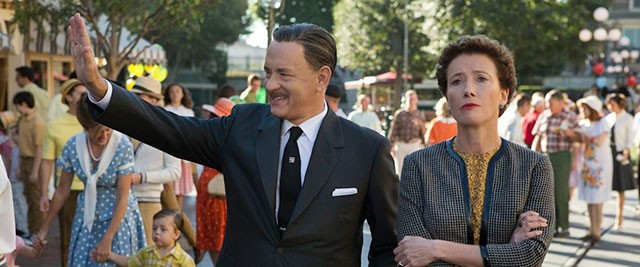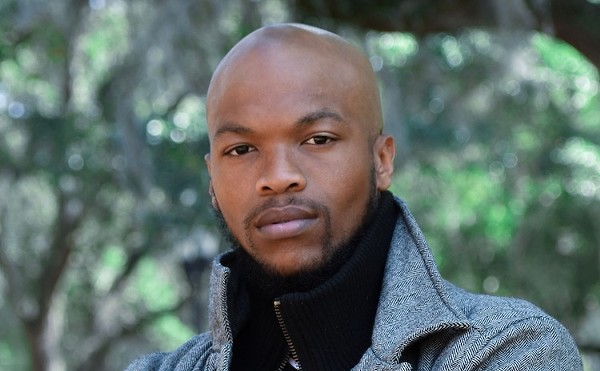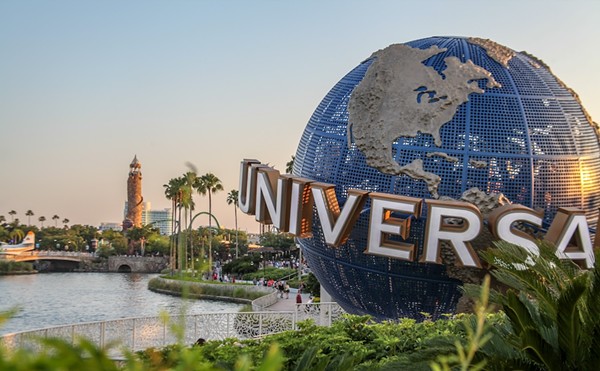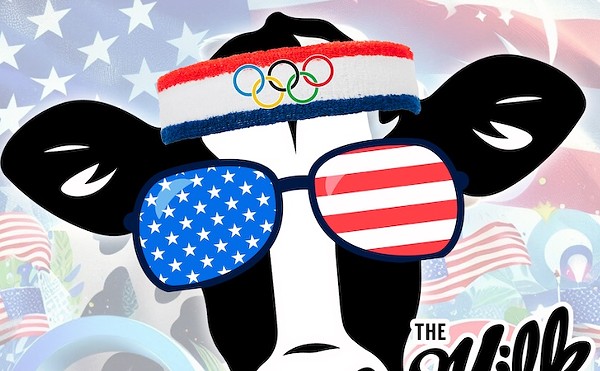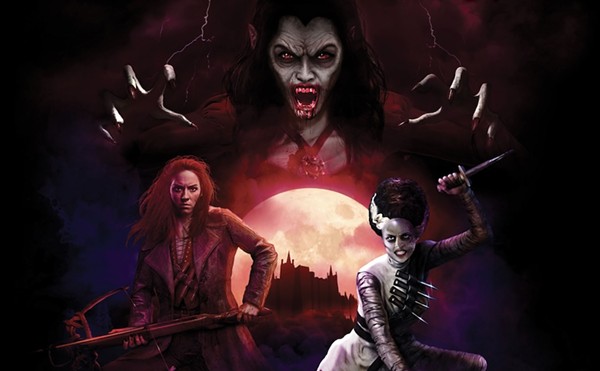Saving Mr. Banks, the Disney-produced docudrama about the making of Mary Poppins, hasn’t exactly burned up the box office (earning $50 million domestically in its first three weekends), but it has ignited critical controversy. Some (including Orlando Weekly film reviewer Cameron Meier) have praised the picture’s performances and apparent authenticity, while others – notably LA Weekly’s Amy Nicholson and sci-fi author Harlan Ellison – have harshly challenged its historical accuracy and agenda. I turned to Disney historian Jim Korkis, whose latest book, The Vault of Walt: Volume 2, deals in-depth with the issue, to separate verifiable fact from artistically enhanced fiction.
Film: Mary Poppins creator P.L. Travers (Emma Thompson) is depicted in 1962 without a child or partner (same-sex or otherwise).
Fact (according to Jim Korkis): “When she was 40 years old [in 1939] Travers adopted a son, but refused to take his twin brother. Her son was 17 when he found out his true parentage when his unknown twin Anthony showed up unexpectedly at the Travers home. … It has been assumed that Travers was bisexual, although no one really knows for sure. She was known to be extremely flirtatious around younger men. At one point, she told an acquaintance that she thought that Walt had ‘eyes’ for her.”
Film: Travers’ Australian childhood included an alcoholic father (Colin Farrell), a Poppins-esque aunt, and a suicidal mother whom she saved from drowning.
Fact: “Travers did have an alcoholic father who passed away when she was 7 [and] an aunt who had a carpetbag, but did not have a parrot-head umbrella. (That came from a maid.) Her mother did tell her to watch over her sister and then walked out to drown herself in despair, but Travers did not save her. The mother survived, but was never quite the same.”
Film: Travers disliked the original songs the Sherman Brothers (B.J. Novak and Jason Schwartzman) wrote, except for “Let’s Go Fly a Kite,” which inspired her to dance and sing.
Fact: “Travers hated all of the songs, feeling that they should be traditional tunes of the time period like ‘Ta-ra-ra Boom-de-ay’ and ‘Greensleeves.’ On the taped story meetings, if you listen closely, you can hear Travers quietly sing along a little with ‘Feed the Birds,’ but she never got up to dance and sing, and certainly not to ‘Fly a Kite.’”
Film: Walt Disney (Tom Hanks) took Travers on a tour of Disneyland, where she rode the carousel.
Fact: “Walt did try to take Travers on a tour of Disneyland, and she hated it. There is no documentation that she rode the carousel, and she definitely didn’t ride a horse named Jingles, who wasn’t given that name until it was dedicated to Julie Andrews in 2008.”
Film: Travers left Hollywood without signing the rights agreement, and Walt Disney flew after her on the next plane. Disney finally persuaded her by bonding over their mutual daddy issues.
Fact: “Walt did not immediately hop on a plane to follow her to England when she left, but the contract was quickly signed. … It is doubtful that Walt even knew anything about her father or her issues about him. There is certainly no evidence that the topic ever came up. Travers herself was prone to denial about anything unpleasant. … Walt never considered his years delivering newspapers for his father in Kansas City as traumatic, but just considered it hard work. As a skinny 9-year-old boy, he did struggle with snowdrifts higher than he was.”
Film: During the premiere, Travers covered her face, rolled her eyes and wept.
Fact: “Travers did weep during the film. She later wrote, ‘Tears ran on my cheeks because it was all so distorted … I was so shocked that I felt I would never write, let alone smile, again!’ At the end of the film, she immediately went to Walt and demanded the entire ‘Jolly Holiday’ animation segment be cut out completely. Walt responded, ‘Pamela, that ship has sailed.’”
Film: Fade out on an uplifting note, implying Travers came to terms with Disney’s adaptation.
Fact: Travers “disliked the film and often said so in interviews and private letters and then insisted that she not be quoted. She told her publisher that the film was ‘all wrapped around mediocrity of thought, poor glimmerings of understanding.’” However, in 1987, when she was in the process of writing a sequel, she watched Mary Poppins again for the first time in 20 years and “found that she liked much of the film and wanted to use some of the elements in the sequel that had been created by the Disney writers.”
Film: Walt Disney was present at Disney’s Burbank studios during the time Travers was there working on the Mary Poppins script.
Fact: “Walt Disney got fed up after the first day and went to his vacation home in Palm Springs, hoping the Sherman Brothers would ‘work something out’ with Travers.”
Film: Co-composer Robert Sherman (Novak) was combative with Travers, while his brother Richard (Schwartzman) played peacemaker.
Fact: “While Robert was less patient than his brother Richard, he was never openly combative with Travers, despite his frustration. A nice attention to detail is that he did use a cane, something most Disney fans never knew. By the way, the film used his recently released autobiography, Moose, for some of the details in the film.”
Film: During her visit to Los Angeles, Travers befriended her studio chauffeur (Paul Giamatti), who had a disabled daughter.
Fact: “The studio chauffeur was a composite character. Disney story editor Bill Dover was Travers’ ‘babysitter’ during her visit and accompanied her to the premiere so she was not alone. … A costumed Mickey did not extend his arm to march her into the theater.”
Film: Disney didn’t initially invite Travers to the film’s Hollywood premiere, but she came anyway.
Fact: “Walt did not invite her to the premiere, figuring it would be more convenient for her to simply attend the one in England. In addition, knowing how strong-willed she was, he probably felt that it would avoid any controversy. Both her lawyer and her publisher had requested that she be invited to the American premiere, but their requests were ignored. Her publisher eventually paid for her flight and her three-day stay at the Beverly Wilshire Hotel. Travers sent a telegram to Walt that she was coming and a formal invitation was almost immediately sent, although Walt spent very little time with her either before, during or after, and sent her a letter expressing his regrets.”
Further facts:
“Walt did carry pieces of paper with his autograph on it to hand out [at Disneyland].”
“A nice bit of attention to detail was that the mouse-head balloons at the time were indeed two-colored, but the machine that made them is long gone. Disney went to the king of balloons, Treb Heining, who created the famous balloon archways and the current Mickey Mouse glass-house balloons, to re-create them, and he had to hand-dye 750 for the film. Heining started selling balloons at Disneyland when he was 16 years old, in 1969.”
“At the time, the King Arthur carousel was at the front of Fantasyland; in the 1980s rehab, it was physically moved further back to open up the courtyard area [as seen in the film].”
“Travers thought in the ‘Jolly Holiday’ sequence that there would be chalk-drawing backgrounds with live actors performing in front of them. There is some question about what she actually understood about the filmmaking process and she may have made some wrong assumptions. … She did dislike Disney cartoons because of what she felt was false sentimentality and had written about them that way decades before Mary Poppins.”

